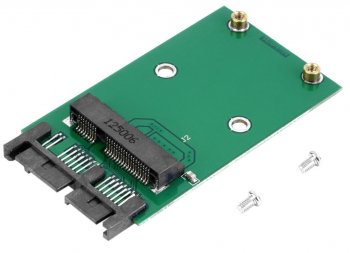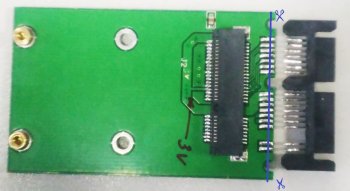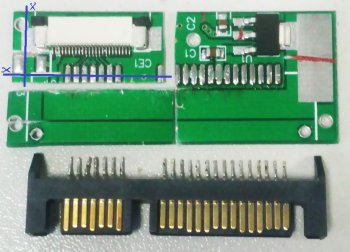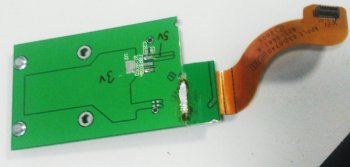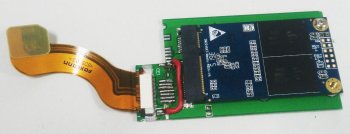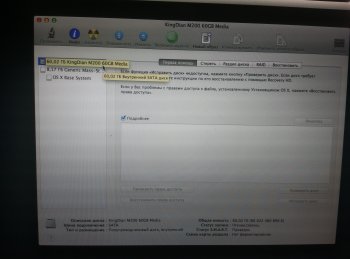Could someone explain what AzLIGHT did with the adaptors? I can't follow the image sequence

It looks to me like he took a micro-SATA to mSATA converter and then soldered the LIF24 connector from the SATA to LIF24 converter onto the mSATA board to get a LIF24 to mSATA converter.
The only aspect of the SATA to LIF24 converter that is important here is that it breaks out the data and power signals from the LIF24 connector: the data signals are routed to the SATA data connector, and the 3.3V from the LIF24 connector is routed to that rectangular solder pad.
Micro-SATA and SATA share the same pin spacing and layout for their seven data pins, so the trick is getting the SATA pads from the LIF24 board to a condition in which they can be soldered to the micro-SATA data pads on the micro-SATA to mSATA board.
To do this, he desoldered both the micro-SATA and SATA connectors from the respective boards and then cut the boards down so that the seven SATA data pads could be placed adjacent to each other and soldered together (picture 6).
The red jumper wire connects the 3.3V from the LIF24 connector to pin 1 of the micro-SATA power connector, which is connected on the board to the 3.3V pins for the mSATA SSD.
In other words, it connects the MacBook Air's 3.3V supply on the LIF24 connector to the mSATA SSD.
It's a very elegant modification.
This is indeed quite impressive!
But why did you cut the corner off instead of using the entire top part of the LIF2SATA adapter? Are those resistors not needed?
The capacitors and linear regulator there are to step the 5V provided by a full-size SATA connector down to 3.3V for the drive connected to the LIF24 connector. Since the MacBook Air provides 3.3V over the LIF24 connector, the extra circuitry for the converter was not needed.





